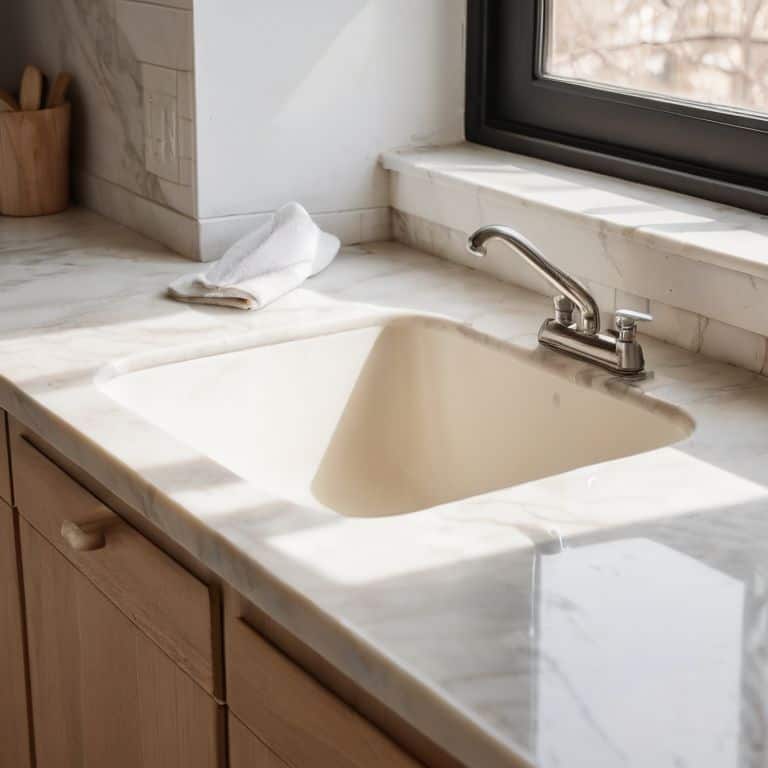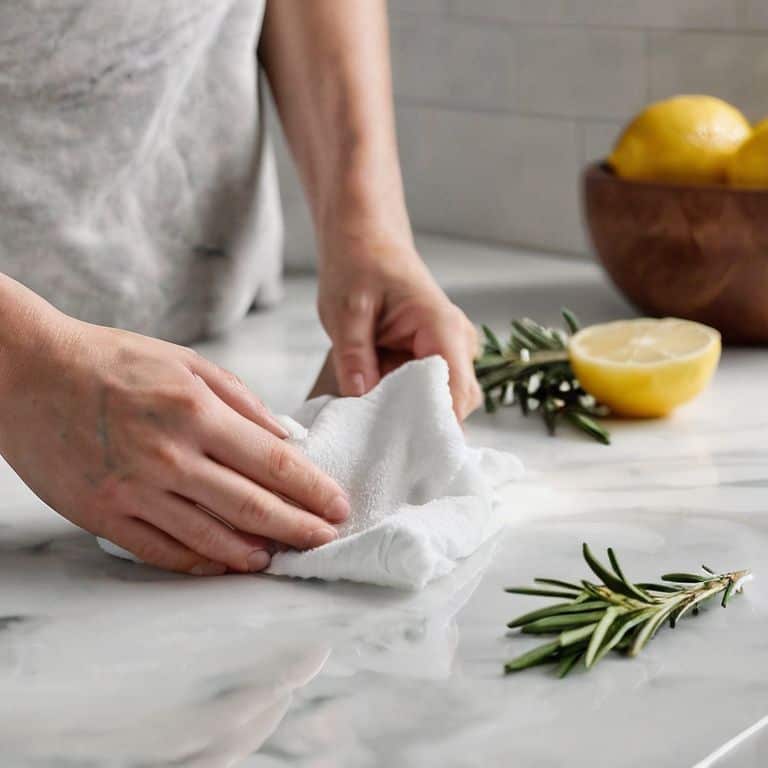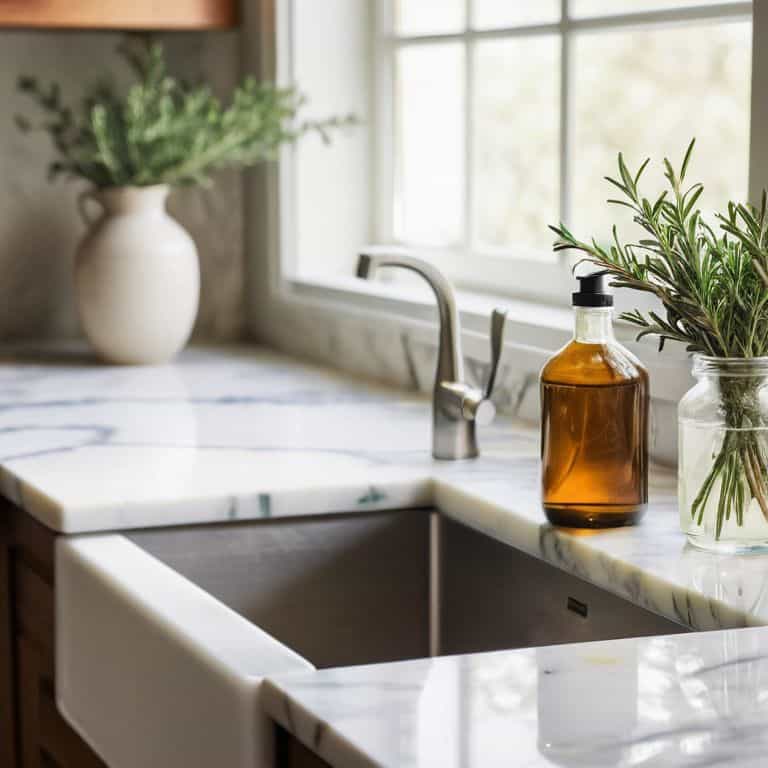I still remember the first time I installed marble countertops in a client’s kitchen – it was love at first sight. The way the light danced across the veining, the subtle sheen that seemed to emanate from within… it was truly breathtaking. But, as I’ve learned from my years of experience, the real challenge comes after the installation: how to clean and maintain marble countertops without losing that initial luster. Many of my clients have struggled with this, and I’ve seen firsthand how a few simple mistakes can lead to a dull, lackluster finish.
In this article, I’ll share my honest, no-nonsense advice on how to clean and maintain marble countertops, gleaned from years of working with these beautiful, yet temperamental, surfaces. You’ll learn the secrets to keeping your marble looking its best, from the best cleaning products to use (and which to avoid) to the simple habits that will help you maintain that initial shine. Whether you’re a seasoned cook or a busy homeowner, I’ll show you how to create a low-maintenance routine that will keep your marble countertops looking stunning for years to come.
Table of Contents
Guide Overview: What You'll Need

Total Time: 1 hour 30 minutes
Estimated Cost: $20 – $40
Difficulty Level: Intermediate
Tools Required
- Soft cloth Microfiber or cotton
- Mild dish soap Diluted with warm water
- Marble cleaner Specifically designed for marble
- Sealer Optional, for extra protection
- Polishing powder For removing scratches
Supplies & Materials
- Baking soda For removing stains
- Hydrogen peroxide For removing tough stains
- Sealing products To protect the marble from spills
- Marble polish To maintain the marble’s shine
Step-by-Step Instructions
- 1. First, let’s talk about the importance of gentle cleaning when it comes to marble countertops. You’ll want to start by dusting the surface with a soft, dry cloth to remove any loose debris or dust particles. This will prevent scratches and make the cleaning process much more efficient.
- 2. Next, mix a solution of warm water and mild dish soap, making sure to avoid any abrasive or acidic cleaners that can damage the marble. Dip a soft, non-abrasive sponge or cloth into the solution, wring it out thoroughly, and wipe down the countertop, working in sections to clean the entire surface. Be sure to clean in a circular motion to avoid streaks and scratches.
- 3. For any stubborn stains or spills, you can use a poultice made from baking soda and water to draw out the stain. Simply apply the poultice to the affected area, cover it with plastic wrap, and let it sit for several hours or overnight. Then, rinse the area with warm water and dry it with a soft cloth.
- 4. To seal and protect your marble countertops, you’ll want to apply a high-quality marble sealer according to the manufacturer’s instructions. This will help repel stains and spills, making cleanup a breeze. Be sure to test the sealer on a small, inconspicuous area first to ensure it doesn’t affect the color or finish of the marble.
- 5. In addition to regular cleaning and sealing, it’s also important to maintain the overall health and appearance of your marble countertops by avoiding extreme temperatures and harsh chemicals. Never place hot pans or appliances directly on the marble, and always use trivets or coasters to protect the surface from water marks and spills.
- 6. To keep your marble countertops looking their best, make it a habit to clean as you go, wiping down the surface after each meal to prevent crumbs and spills from building up. You can also use a marble cleaner or a solution of equal parts water and white vinegar to quickly clean up any spills or stains.
- 7. Finally, consider implementing a regular maintenance routine to keep your marble countertops in top condition. This can include re-sealing the marble every 6-12 months, polishing the surface with a marble polish, and avoiding the use of abrasive cleaners or scrubbers that can damage the stone. By following these simple steps and staying committed to regular maintenance, you can enjoy the beauty and elegance of your marble countertops for years to come.
Cleaning Marble Countertops

When it comes to cleaning marble countertops, I always say that gentle is better. You want to avoid using harsh chemicals or abrasive cleaners that can damage the surface of your marble. Instead, opt for a natural marble cleaner recipe that uses ingredients like baking soda and white vinegar. Not only are these ingredients effective at removing stains and grime, but they’re also eco-friendly and won’t break the bank.
In addition to using the right cleaning products, it’s also important to prevent water spots from forming on your marble countertops. This can be as simple as wiping down the surface after each use or using a marble countertop polishing technique to create a barrier against water and other liquids. By taking these extra steps, you can keep your marble countertops looking like new and reduce the need for costly marble repair and restoration down the line.
As part of your daily marble countertop maintenance routine, consider setting aside a few minutes each day to quickly wipe down the surface and remove any crumbs or spills. This will help prevent stains from setting in and make cleaning a whole lot easier in the long run. Whether you have marble or granite countertops, the key is to find a cleaning and maintenance routine that works for you and your lifestyle, and to stick to it consistently.
Marble Polishing Techniques
To take your marble countertops from clean to radiant, it’s time to bring out the big guns: polishing. I swear by a gentle polishing powder and a soft, clean cloth to buff out any scratches or etch marks. For a more dramatic glow, I recommend using a marble polishing compound – just be sure to follow the instructions carefully to avoid damaging the stone. A little elbow grease and patience can work wonders, leaving your countertops looking like new.
For a finishing touch, I like to use a marble sealant to protect the stone and make future cleaning a breeze. It’s amazing how a little polish and seal can transform the entire look and feel of your kitchen – it’s like a breath of fresh air for the whole space.
Natural Marble Cleaner Recipes
I’m a big fan of making my own cleaning solutions, and when it comes to marble, it’s all about gentle, non-abrasive ingredients. One of my favorite recipes is a simple mixture of equal parts white vinegar and water in a spray bottle. This combo is perfect for everyday cleaning and adds a lovely sheen to the marble. For tougher stains, I mix baking soda and water to create a paste, applying it to the stain and letting it sit for about 30 minutes before wiping clean with a damp cloth. These natural cleaners not only keep my marble countertops looking their best, but they’re also budget-friendly and better for the environment.
My Top 5 Secrets for a Stunning, Low-Maintenance Marble Countertop
- Seal your marble countertops regularly to prevent stains and make cleaning easier – I like to do this every 6-12 months, depending on usage
- Use a gentle, pH-neutral cleaner specifically designed for marble, and avoid harsh chemicals that can etch the surface
- Create a ‘landing strip’ near your cooking zone with a pretty tray or mat to corral clutter and prevent scratches
- Develop a ‘clean-as-you-go’ habit to prevent crumbs and spills from becoming stubborn stains – a soft, dry cloth is your best friend
- Invest in a good-quality marble polish to restore the shine and shelve your countertops from etching – it’s a game-changer for busy home cooks like me
Key Takeaways for a Marble Countertop Oasis
Embracing a simple yet consistent cleaning routine is crucial for maintaining the elegance and durability of your marble countertops, and it all starts with the right techniques and tools
By mastering marble polishing techniques and incorporating natural cleaner recipes into your maintenance schedule, you can ensure your countertops remain a stunning focal point in your kitchen
A well-designed kitchen, complete with beautifully maintained marble countertops, is not just a space for cooking – it’s the heart of your home, where memories are made and inspiration is ignited, one delicious meal at a time
The Marble Mindset
A beautiful marble countertop is not just a design statement, it’s a promise to yourself to cook with love and care – and that starts with a gentle touch and a thoughtful cleaning routine.
Clara Wu
Bringing it all Together: A Marble Countertop Oasis

As we’ve explored the world of marble countertop care, it’s clear that creating a maintenance routine is key to preserving the beauty and functionality of your kitchen’s centerpiece. From marble polishing techniques to whipping up your own natural cleaner recipes, every step counts in the journey to a stunning, low-maintenance marble surface. By incorporating these simple yet effective methods into your daily and weekly cleaning schedules, you’ll be well on your way to enjoying the luxurious look and feel of marble without the hassle.
So, the next time you step into your kitchen, remember that it’s not just about cooking up a storm – it’s about creating a space that inspires. With your newly acquired marble countertop care skills, you’ll be free to focus on the things that truly matter: sharing meals with loved ones, experimenting with new flavors, and making memories that last a lifetime. As you gaze upon your impeccably maintained marble countertops, recall that a beautiful kitchen is the heart of a happy home, and let that be the guiding force behind every culinary adventure that unfolds.
Frequently Asked Questions
What are the most common mistakes to avoid when cleaning and maintaining marble countertops?
When it comes to cleaning and maintaining marble countertops, I see two common mistakes all the time: using harsh chemicals that etch the surface, and neglecting to seal the marble regularly, leaving it vulnerable to stains. Avoid these pitfalls, and your marble will stay stunning for years to come!
How often should I seal my marble countertops to prevent stains and etching?
Sealing your marble countertops is crucial to prevent stains and etching. I recommend sealing them every 6-12 months, depending on usage. For high-traffic kitchens, consider sealing every 6 months, while low-traffic kitchens can get away with sealing annually. You can also test the seal by dripping water on the surface – if it beads up, you’re good; if it absorbs, it’s time to reseal!
Can I use natural marble cleaner recipes on all types of marble, or are some more sensitive than others?
While natural marble cleaner recipes are generally gentle, some types of marble are more sensitive than others. For example, softer marbles like Carrara or Statuario may require extra caution, while harder marbles like Calacatta can withstand slightly more robust cleaning methods. Always test a small area first to ensure the best results.
